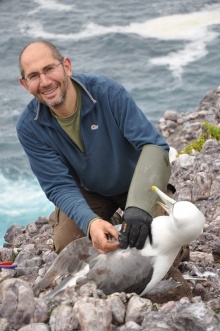Hook, line and extinction: Can sound science save albatrosses from fisheries?

Richard Phillips
British Antarctic Survey, Cambridge, UK - raphil@bas.ac.uk
(seminar in English)
Global declines of albatrosses and large petrels have been attributed to incidental mortality (bycatch) in fisheries, but without detailed information on demography and distribution, it is rarely possible to determine which component of populations are at particular risk, and where to target conservation efforts. Tracking data provide an essential tool for identifying the areas and times of greatest overlap and hence risk of interaction with particular fisheries. This talk will examine the threat posed by bycatch and, using the wandering albatross population at South Georgia as a case study, highlight the ways in which tracking, demographic and fisheries datasets can be integrated to understand the scale of the bycatch problem and the potential solutions.
Recent publications:
Phillips, R.A., Gales, R., Baker, G.B., Double, M.C., Favero, M., Quintana, F., Tasker, M.L., Weimerskirch, H., Uhart, M., and Wolfaardt, A. (2016) The conservation status and priorities for albatrosses and large petrels. Biological Conservation 201, 169-183.
Jiménez, S., Domingo, A., Brazeiro, A., Defeo, O., Wood, A.G., Froy, H., Xavier, J.C. and Phillips, R.A. (2016) Sex-related variation in the vulnerability of wandering albatrosses to pelagic longline fleets. Animal Conservation 19, 281-295.
Tancell, C., Sutherland, W.J and Phillips, R.A. (2016) Marine spatial planning for the conservation of albatrosses and large petrels breeding at South Georgia. Biological Conservation 198, 165-176.
David Grémillet : david.gremillet@cefe.cnrs.fr
Contact du Comité SEEM: seem@services.cnrs.fr. Contact du Labex CEMEB: gestion.cemeb@univ-montp2.fr


